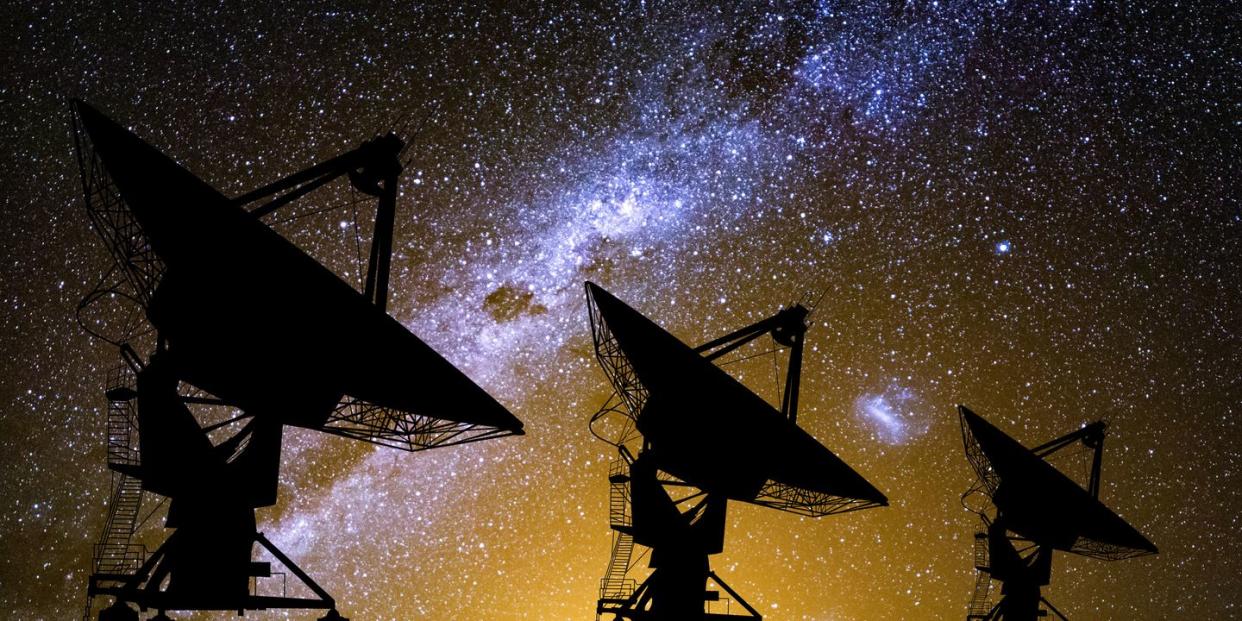The World's Most Sensitive Radio Telescope Just Got 2x Better

A powerful radio array just doubled in sensitivity.
The array, known as HERA, is filling in the gaps in our knowledge of the early universe.
Specifically, it aims to map the large-scale structure between early stars and galaxies, which comprises about 95 percent of primordial-universe matter.
One of our deepest-space telescopes just got two times better. The team behind the Hydrogen Epoch of Reionization Array (HERA), recently released a paper detailing new techniques they’ve developed to make the instrument twice as good at detecting far-off radio waves from the very beginning of time.
HERA was already the world’s most sensitive radio telescope (even though its receiver dishes are literally built from chicken wire and PVC pipe), and it just doubled its sensitivity. This will open up a whole new world of possibilities for observing radiation from the beginning of the universe.
Or at least, near the beginning of the universe. HERA is focused on mapping out the large-scale structure of the universe prior to and during a period of the early universe known as the Epoch of Reionization—the era when the very first stars and galaxies began to take shape out of vast clouds of debris. The array’s goal is to take a look at the 95% of matter that can’t be detected by telescopes operating in shorter wavelengths, filling in the vast gaps in our picture of the early universe.
In order to accomplish this, HERA is looking for something called the 21-centimeter line—a radio wavelength given off by neutral hydrogen (hydrogen with an electron), but not ionized hydrogen (hydrogen without an electron). Hydrogen loses its electron when it gets ionized by the heat of a star, so any place that 21-cm line isn’t is already covered by other telescopes. HERA can focus on the places between ionization bubbles.
It seems like seeing a line that could filter through 95% of the early universe wouldn’t be so hard, but the 21-cm line originating from that moment of stellar ignition has yet to be spotted. Throughout the time HERA has been looking for this line, though, it’s found some truly remarkable hints as to what the early universe looked like, and how different ancient stars and galaxies are from those in the more modern universe. In particular, the array has noticed a surprising lack of those star-formed ionization bubbles.
The fact that even a super-juiced HERA has yet to spot those bubbles tells scientists something, about the earliest stars. “Early galaxies have to have been significantly different than the galaxies that we observe today in order for us not to have seen a signal,” Aaron Parsons, principal investigator for HERA and astronomer, said in a press release. “In particular, their X-ray characteristics have to have changed. Otherwise, we would have detected the signal we’re looking for.”
Changing X-ray characteristics means changing stellar compositions. Today, most stars are made of a number of elements—hydrogen, helium, and various metals (what astronomers call every element heavier than helium). This lack of signal tells us that that primordial stars were likely made almost entirely of hydrogen and helium, with little to no metals to be found. The more metals in a star, the more ionization—and more X-rays—you get.
We still have a lot of ground to cover in our efforts to truly understand the earliest phases of the universe. But we’re getting there, and boosting HERA’s sensitivity is going to bring us even closer.
“This is moving toward a potentially revolutionary technique in cosmology. Once you can get down to the sensitivity you need, there’s so much information in the data,” Joshua Dillon, a researcher and lead author of the paper, said in a news release. “A 3D map of most of the luminous matter in the universe is the goal for the next 50 years or more.”
50 years might sounds like a long time, but it’s the blink of an eye in the vastness of the cosmos.
You Might Also Like
